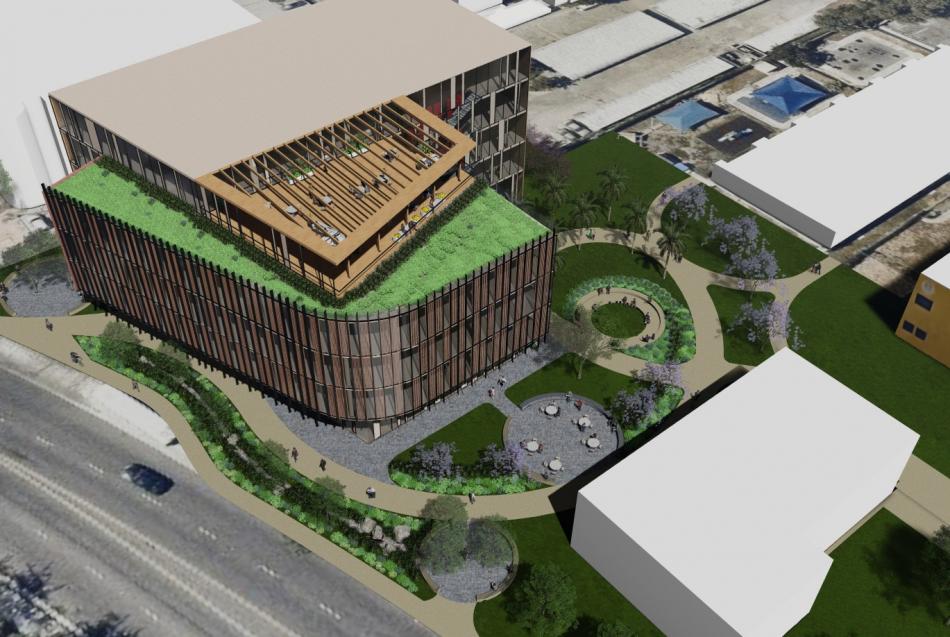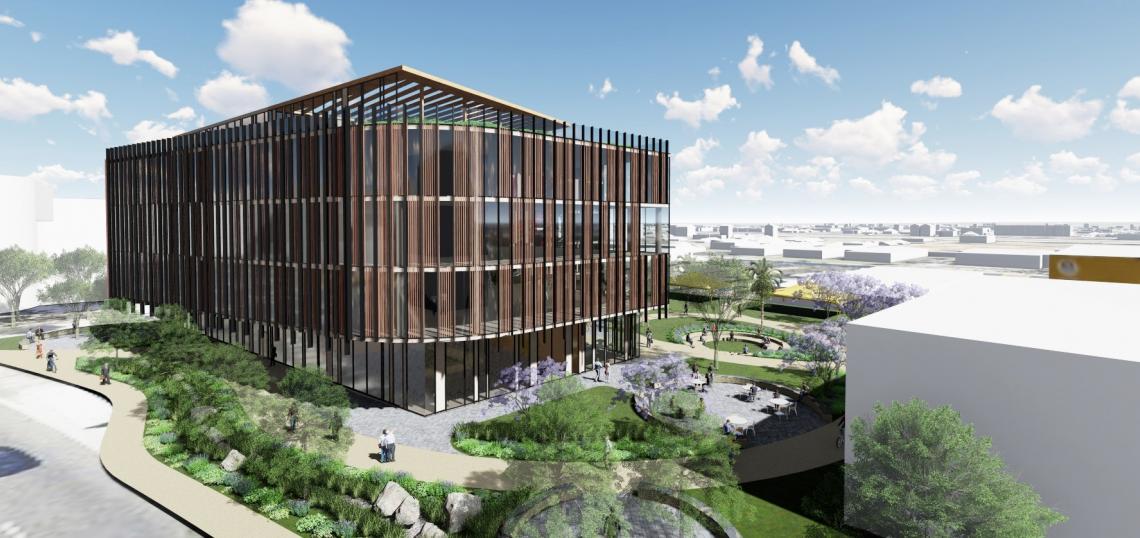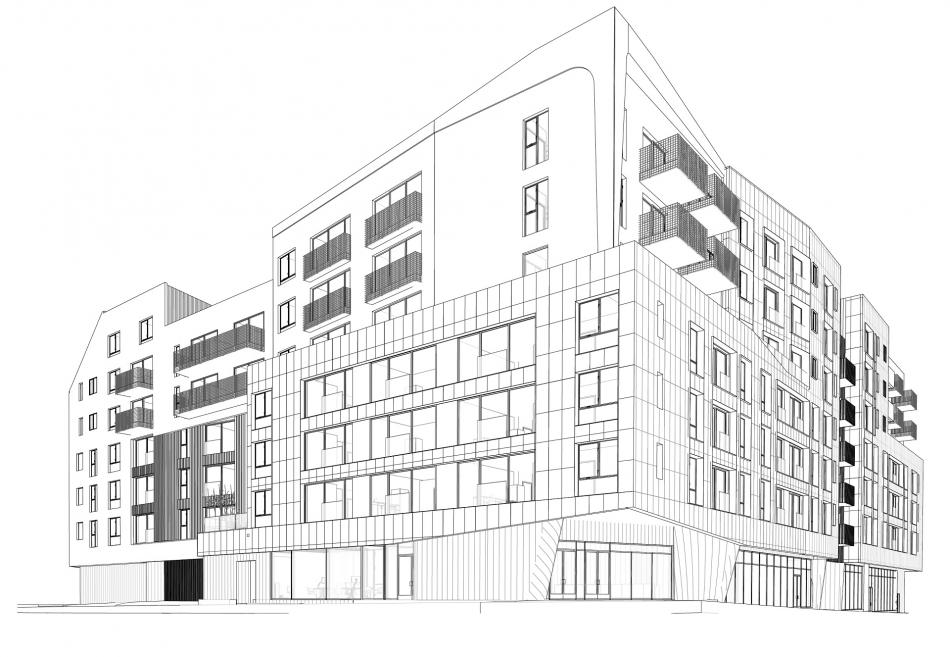The Charles R. Drew University of Medicine and Science (CDU) is one step closer to building a new home in the unincorporated community of Willowbrook.
 Rendering of proof-of-concept for new building at Charles R. Drew University in WillowbrookCharles R. Drew University
Rendering of proof-of-concept for new building at Charles R. Drew University in WillowbrookCharles R. Drew University
On Wednesday, the Los Angeles County Board of Supervisors voted to adopt the findings of a mitigated negative declaration compiled for CDU's "New Health Professional Education Building," which would house the school's existing College of Medicine programs and a new four-year medical degree program.
Plans call for the construction of a roughly 46,000-square-foot area at the southwestern corner of the university campus at 1731 E. 120th Street. Two existing modular buildings would be razed to make way for the new 92,000-square-foot structure featuring classrooms, a lecture hall, meeting rooms, a cafe, study rooms, offices, conference space, simulation rooms, locker rooms, and other support spaces.
Construction of the new building is expected to occur over a roughly two-year period, commencing as early as 2023 and opening for students by 2025.
Roughly 30 miles north in East Pasadena, a different type of project also secured a key sign-off. The Board of Supervisors voted to uphold the approval of a proposed mixed-use apartment complex at 380 S. Rosemead Boulevard, rejecting an appeal from the labor union-affiliated Supporters Alliance for Environmental Responsibility (SAFER).
Pasadena-based Legendary Developments, LLC is planning a new seven-story building for the 1.1-acre site, currently improved with a church and a series of small commercial buildings. The new project would feature 193 studio, one-, and two-bedroom apartments above 7,828 square feet of ground-floor commercial space and a 205-car semi-subterranean parking garage.
According to a staff report, 13 of the proposed apartments are to be set aside for rent by extremely low-income households at completion. The inclusion of affordable housing made the project eligible for density bonus incentives permitting increased height and floor area, among other incentives.
SAFER's appeal argued that the project should be subject to a full environmental impact report, and contends that the County Department of Regional Planning improperly granted administrative approval to the proposed development, rather than subjecting it to discretionary review.








